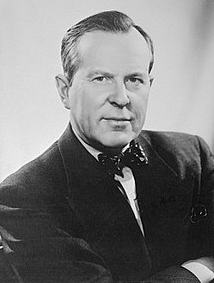The Fourteenth One - Lester "Mike" Pearson
It’s the fourteenth prime minister day! It’s Lester Pearson Day! I’m likely the only one aware of this or celebrating it, but it’s a party at my place.
Lester Pearson is the namesake of Canada’s busiest airport in Toronto, the winner of a Nobel Peace Prize, and was the last Canadian prime minister to be born in the 19th century - take that to your next trivia night. Lester Pearson was born on April 23, 1897 to parents Edwin and Annie Pearson. His father was a Methodist minister in York, Ontario, which has since been swallowed by Toronto. He has a jock, playing everything from rugby to hockey, basketball and baseball, and dabble in tennis and golf. He had, by all reports, a relatively stable and milk upbringing, attending the University of Toronto. The coolest thing about Lester Pearson, besides his name being Lester, is that in university he participated in The Bob Comedy Revue, Canada's longest running sketch comedy revue. That is nerdy and badass.
Lester was 17 when World War 1 began to roar, and he jumped into service, first working as a medical orderly before heading overseas in 1915 as part of the Canadian Army Medical Corps as a stretcher bearer. In 1917, Lester transferred to the Royal Flying Corps - before the Royal Canadian Air Force and the Royal Canadian Air Farce (as a satirist, Pearson would have enjoyed that joke). It was there that he earned the nickname Mike, because one of his officers didn’t think “Lester” was the most masculine name for a pilot. From them on, his only used the name Lester for official documents and public life, but went by Mike in his private life.
After the War, Lester (as I call him) went back to school, obtaining a Bachelor of Arts degree from the University of Toronto, then went to Oxford, getting educated in modern history. This led him back to the UofT, teaching history at the university. This is where he ultimately met his wife, Maryon Moody. The couple were wed in 1925 and ultimately had two children - Geoffrey and Patricia.
Lester’s wade into the political waters was rather slow. As he garnered top marks on his entrance exam in the toe foreign service, he attracted attention from then PM RB Bennett. Bennett regarded himself as a talent spotted and encouraged Lester’s rise through the ranks of the foreign department. He was assigned to the High Commission of Canada to the United Kingdom in the late 1930s, leading up to WW2 before being posted to the Canadian Embassy in Washington during the war, ultimately becoming the Canadian Ambassador to the US.
This was by the time he was in his mid-40s. Lester’s resume in intimidating.
It’s really no surprise that with all of Lester’s experience in foreign policy, he had a large impact on the United Nations. He played a huge role in both the United Nations and NATO, and almost became the first Secretary-General of the United Nations, but his nomination was vetoed by the Soviet Union.
In 1948, William Lyon Mackenzie King appointed Lester as Secretary of State for External Affairs, continuing on his diplomatic career, which led to him running for Parliament. He won in the riding of Algoma East and started his political career under the liberal leadership of Louis St. Laurent.
The pinnacle of his career, from an outsiders standpoint, must have been the Nobel Peace Prize in 1957. He was awarded it for his work negotiating the Suez Canal Crisis - to be fair, I know very little about it, so that is exactly what I’m going to write about next time.
Lester Mike Pearson, the eternal jock.
After St. Laurent’s retirement, he looked to Lester as his successor, which came to fruition when Lester won the party leadership in 1958, becoming opposition leader to The Dief’s Tory government. He was ultimately elected as PM in 1963 and was in power for five years, having a fairly successful and productive time in office. He is remembered fondly as one of Canada’s most successful prime ministers, according to McLean’s Magazine, right behind his successor, Pierre Trudeau.
Time’s cover of ‘Canada’s Pearson’.
One of the most challenging scandals during Lester’s time in office was easily Charles de Gaulle’s 1967 visit to Quebec, where the French political yelled “Viva le Quebec”, enflaming the issue of Quebec’s separation. This prompted Lester to rebut de Gaulle, saying that “Canadians do not need to be liberated” before uninviting de Gaulle to Canada.
Lester announced his retirement on December 14, 1967, also known as my mother’s 12th birthday. He was easily succeeded as Liberal Leader and ultimately PM by Pierre Trudeau, who Lester recruited and made justice minister in his cabinet. Viva la Liberals.
Five years after his retirement, Lester succumbed to cancer. He died on December 27, 1972 at his home in Ottawa.
Lester proved that jocks can be peacemakers, and that a successful leadership doesn’t have to be a tumultuous one. More on this next time.


